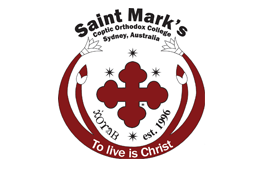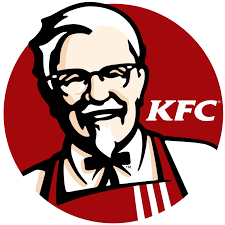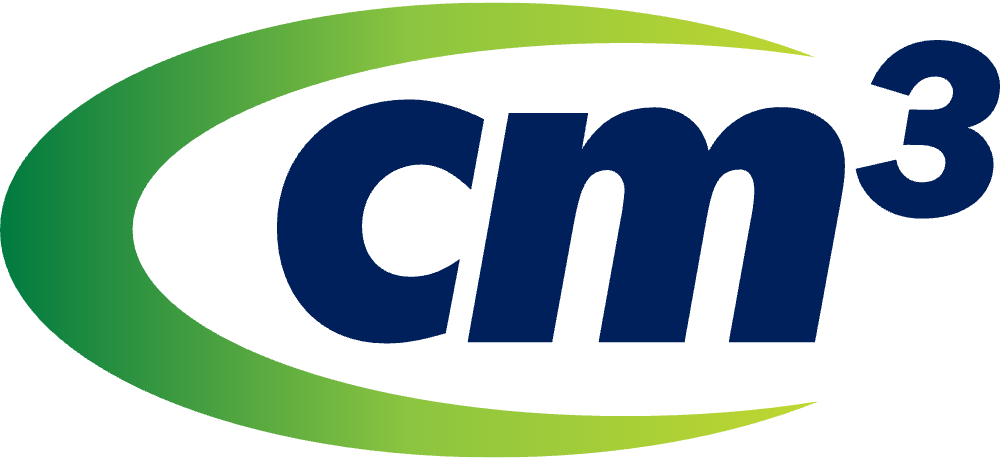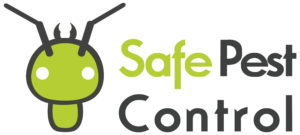Food Processing Facility Pest Management
- Online Reporting
- Pest trend analytics
- All Year Round Protection
- 5 Star Rating
Customer Reviews in Sydney
Trustindex verifies that the original source of the review is Google. Para was great - fantastic service, very professional, and very friendly !Trustindex verifies that the original source of the review is Google. Para was friendly and quickTrustindex verifies that the original source of the review is Google. Good work. Para8Trustindex verifies that the original source of the review is Google. Good work para.Trustindex verifies that the original source of the review is Google. Good work para. Love your work.Trustindex verifies that the original source of the review is Google. Para great work in 533 princess highwayTrustindex verifies that the original source of the review is Google. Para is an Awesome Worker. Loved his work. Really Professional Pest Control in Sydney.Trustindex verifies that the original source of the review is Google. Excellent service! Parashar was prompt, professional, and very thorough. He quickly identified the issue and took care of it efficiently. Haven’t seen a single bug since! Highly recommend for anyone dealing with pest problems.👍🏽👍🏽Trustindex verifies that the original source of the review is Google. Para was fantastic, very detailed. Good service and great communication. 5*Verified by TrustindexTrustindex verified badge is the Universal Symbol of Trust. Only the greatest companies can get the verified badge who has a review score above 4.5, based on customer reviews over the past 12 months. Read more
“70% of our Business is returning customers and referrals, and we take immense pride in the positive feedback we consistently receive.”
TRUSTED BY REPUTABLE AUSTRALIAN BRANDS












Essential Strategies for Success
Managing pests in a food processing facility is crucial for maintaining food safety and quality. Effective pest management ensures that our products remain uncontaminated and safe for consumers. Pests can spread bacteria and other harmful pathogens, which can compromise the safety of the food and beverage that we produce.
We need to implement stringent measures to keep our food industry and facilities pest-free. This includes regular inspections, the use of traps and baits, and maintaining clean environments. By doing so, we can minimize the risk of pests and their impact on food safety.
It’s also important to educate our staff about best practices in pest management. This means understanding how pests enter the facility and what can be done to prevent pest infestations there. Proper training helps ensure that everyone is vigilant and proactive in maintaining a pest-free environment.
Principles of Integrated Pest Management (IPM)
Integrated Pest Management (IPM) in food processing facilities focuses on proper identification, prevention, and control of pests. Our goal in food processing pest control is to maintain high sanitation standards and use careful methods to keep pests out.
Fundamentals of IPM in Food Processing
IPM in the food processing industry involves several core principles. We start with proper identification of pests, which helps in planning a strategy. Prevention is key, which includes measures like sealing cracks, proper waste disposal, and good sanitation. Monitoring allows us to track pest levels and effectiveness of our efforts. When necessary, we use safe control methods, such as traps or specific treatments, minimizing the use of chemicals.
Role of Inspection and Identification
Regular inspections are vital. We must check for signs of pests like droppings, nests, or damage to products. Proper identification involves knowing exactly what type of pest we’re dealing with. This helps in choosing effective treatments. Using tools like traps for monitoring, we can catch and identify the pests. Accurate records of our findings guide our ongoing pest management strategy.
Preventative Measures for Pest Control
Prevention is about stopping pests before they become a problem. Sanitation is critical; we must keep our facility clean to avoid attracting pests. This includes regular cleaning schedules and quick cleanup of spills. Exclusion methods, like sealing entry points and installing barriers, prevent pests from entering the facility. Proper storage of food products, including airtight containers and proper stacking, also reduces the risk of pest infestation.
Sanitation and Maintenance Strategies
We must ensure proper cleaning and upkeep in food processing facilities to prevent diseases and pest issues. Good sanitation, waste management, and equipment care are crucial for maintaining a safe and hygienic environment.
Cleaning Protocols and Waste Management
We should follow strict cleaning protocols daily. All surfaces must be wiped down with approved cleaning agents. Floors should be swept and mopped to remove food particles. We need to clean storage areas regularly to control dust and crumbs.
Waste management plays a key role. Trash bins must be emptied frequently and properly sealed to prevent pest access. We also need to clean bins themselves to avoid residue build-up. By keeping our facility clean, we reduce the likelihood of attracting pests.
WHY CHOOSE US
365 days of confidence in our work
- 12 Month Warranty
- TAILORED SOLUTIONS
- Pest Trend Analisys
- FULLY LICENSED TECHNICIANS
- ON TIME SERVICE
- Rapid Knock Down
BOOK YOUR FREE PEST INSPECTION TODAY!
Safe Pest Control Takes Time For Our Community
At Safe Pest Control, we go beyond pest treatments – we actively support and care for our community.

Equipment and Facility Maintenance
Maintaining equipment is important for both hygiene and efficiency. We should perform regular inspections to check for wear and tear. Faulty or dirty equipment can harbor pests and cause contamination.
We should establish a schedule for equipment cleaning and maintenance. This includes checking seals, filters, and parts that may collect debris. We also need to ensure proper storage of tools and machinery when not in use. Consistent maintenance helps us keep the facility free of pests and working smoothly.
Monitoring and Documentation
Effective pest management in a food processing or packaging facility requires precise monitoring and meticulous documentation. We will explore setting up monitoring systems, maintaining records, ensuring traceability, and responding to pest sightings.
Setting Up Monitoring Systems
Monitoring systems are vital in detecting pests early. We place traps and sensors in high-risk areas, such as storage and food preparation zones. Glue traps, pheromone traps, and UV light traps can all help in identifying and controlling various pests.
Sensors provide real-time data, allowing us to quickly act on infestations. Regular checks on these devices ensure they remain effective. Staff training on how to use and maintain these tools is also crucial for success. Click here to read about Industrial silo pest prevention.
Record Keeping and Traceability
Documentation allows us to track and manage pest control efforts efficiently. Logs should detail the type of pest, location of the sighting, actions taken, and the outcomes of pest control services.
Maintaining detailed records helps identify patterns and recurrence. We use software systems to store and organize this information, making it easy to retrieve and analyze. Accurate records support compliance with health and safety regulations and business by.
Responding to Pest Sightings
Quick response to pest sightings is essential. When a pest is found, our protocol includes immediate documentation and an action plan. This plan often involves identifying the pest species, assessing the infestation level, and choosing the right treatment.
Prompt responses help prevent the spread of pests. Regular training ensures our staff reacts efficiently and effectively. By maintaining a well-documented history of past pest sightings and responses, we improve our future of pest prevention and control measures.
Regulatory Compliance and Standards
Ensuring pest management in food processing facilities requires meeting strict regulations and standards. We must comply with all food safety standards, regulations and industry-specific health guidelines.
Adhering to Food Safety Regulations
We follow several key regulations. The Food Safety Modernization Act (FSMA) by the FDA is crucial ensure food safety. It includes preventive controls and requires us to have a pest management plan. A robust plan helps avoid contamination. Codex Alimentarius serves as a guide. It’s a worldwide reference that ensures food safety. Proper pest control aligns with its standards. Following these rules reduces risks and promotes public health.
Meeting Industry and Health Regulations
We must comply with industry and health regulations overseen by organizations like the National Pest Management Association (NPMA). NPMA provides best practices for pest control in food facilities. These practices include regular inspections and monitoring. The Food Standards Code sets standards we must meet. It covers hygiene, pest control for food management, and contamination prevention. Proper compliance ensures our facility is safe and hygienic.
Global Food Safety Initiatives
Global initiatives like the Codex Alimentarius and local regulations guide our pest management. Each region may have specific rules. These initiatives ensure we meet international standards. This is crucial for exporting products. We must be aware of regional differences and regulations for global compliance. By adhering to these initiatives, we protect our consumers and ensure product safety across borders.
Pest Exclusion and Control Techniques
Effective pest management in food processing facilities relies on a mix of exclusion methods, chemical and non-chemical treatments, and emerging technologies. Each plays a vital role in maintaining a pest-free environment for food business.
Structural Exclusion Methods
We focus first on physical barriers to keep pests out. Air curtains are installed above entryways to blow air downwards, preventing pests from flying or crawling indoors. Mesh screens can cover windows and vents, allowing air flow while blocking insects.
Weather strips are essential for sealing gaps around doors and windows. They prevent pests from entering through small openings. Self-closing doors ensure doors are never left open unintentionally, further reducing entry points for pests. These structural methods create a strong first line of defense.
Chemical and Non-Chemical Treatment Options
When exclusion isn’t enough, we turn to pest treatment as options. Chemical treatments, including pesticide usage, are commonly employed to eradicate pests. It’s crucial to use these chemicals safely and as prescribed to avoid contamination.
Non-chemical methods such as traps and baits are also effective. These can target specific pests without introducing chemicals into the environment. Regular monitoring and maintenance of these treatments help in assessing their effectiveness and ensuring a pest-free facility.
Emerging Technologies in Pest Management
Advancements in technology offer new solutions for pest control. Using sensors and data analytics, we can now track pest activity in real-time, allowing for quicker responses to infestations. This proactive approach to pest control solutions reduces the need for reactive treatments.
Automated pest control systems release controlled amounts of pesticides or use non-chemical methods such as UV light traps. These various control services can be programmed to operate at specific times, ensuring consistent pest management without manual intervention. By adopting these technologies, we can enhance the efficiency and effectiveness of our pest control strategies.

